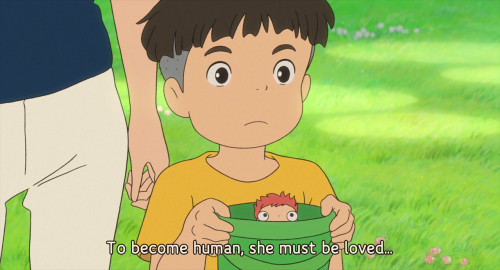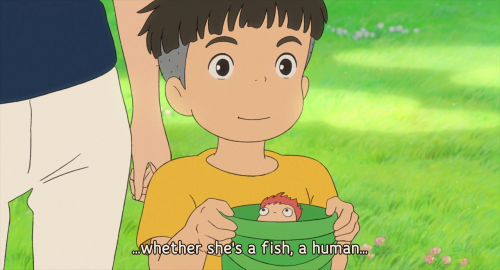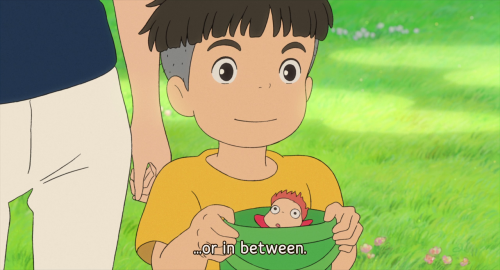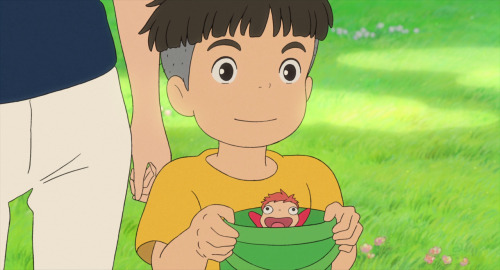From @park_kkone: “Benny And Berry❤️ Father And Daughter👨👧💕#fatherslove .
From @park_kkone: “Benny and Berry❤️ Father and daughter👨👧💕#fatherslove . 베니와 베리❤️ 아빠와 딸👨👧 #딸바보 베니💕” #catsofinstagram [source: https://ift.tt/2NbX0xg ]
More Posts from Iphleandro-blog and Others

(Image caption: An electron micrograph image shows a parallel fiber-Purkinje cell. The presynaptic cell, a parallel fiber, is colored red while the postsynaptic cell, a Purkinje cell, is colored green. Credit: OIST Computational Neuroscience Unit)
Scientists Illuminate Mechanism at Play in Learning
The process we call learning is in fact a well-orchestrated symphony of thousands of molecular reactions, but the exact interplay between these reactions remains largely unknown. Now, researchers at the Okinawa Institute of Science and Technology Graduate University (OIST) have modelled the molecular basis of learning in the cerebellum, a part of the brain that receives sensory input and coordinates voluntary movements.
“As far as we know, this is the most complex model of such a system that exists,” said Erik De Schutter, head of OIST’s Computational Neuroscience Unit and senior author on the recent paper, published in Cell Reports. Previous models focused on the signals that arrive at the receiving end of a neuron, he said, “whereas now we’re looking at the ongoing communication between the two ends.”
Learning is thought to be a balance between two processes that act as a kind of molecular dial: long-term potentiation (LTP), in which the connection between two neurons is strengthened, and long-term depression (LTD), in which the connection between two neurons is weakened. Both these processes take place at the synapse—the junction between two neurons. Andrew Gallimore, first author on the paper and a postdoctoral researcher at OIST, modeled how they work in two types of cells: parallel fibers and Purkinje cells, which play a key role in motor learning.

(Image caption: Learning is thought to be a balance between two processes that act as a kind of molecular dial: long-term potentiation (LTP), in which the connection between two neurons is strengthened, and long-term depression (LTD), in which the connection between two neurons is weakened. Such a large, comprehensive model allows scientists to examine how complex signaling systems work together. Credit: OIST Computational Neuroscience Unit)
Using a computer program to create a model of this complex system, Gallimore combined several hundred equations taken from experiments in which such neurons were activated. The model was put to the test when colleagues in Korea took recordings from neurons in the cerebellum of mice. The OIST researchers then incorporated these recordings into the model.
Their findings show that the molecular networks on both sides of a synapse are important for controlling learning: communication must occur in both directions across the synapse to control whether LTD or LTP is generated during neural activity.
The model also showed that the molecular dial balancing LTP and LTD has an automatic off-switch that, when triggered, allows the system to return to its resting state. Although previous research hinted at the presence of this off-switch, this is the first time that the mechanism behind it—a complex network of proteins and receptors—has been demonstrated. Such a large, comprehensive model allows scientists to examine how complex signaling systems work together, something that is often absent in experimental literature, De Schutter said.
The researchers’ work allows scientists to more accurately predict the behavior of the chaotic, complex system of molecules that controls learning. It also hints at what might be happening at the molecular level when these switches break—which might occur when the brain is injured or during neurodegenerative diseases that affect learning.
“The whole function of a brain is based on the strengths of these synaptic connections,” said Gallimore. “The better we understand these processes, the greater potential there is to intervene to mitigate severe problems.”

Piotr Rajchel

The Bortle Scale and Light Pollution
The Bortle Scale is used by astronomers to rate the darkness of our skies. It ranges from 1 (darkest) to 9 (brightest). For most of us, our daily lives are spent beneath a radiance level of between 5 and 8 and rarely venture into areas ranked 3 or darker- and what a shame that is.
Light pollution, while a testament to our technological advances, has blanketed our view of the universe and decoupled our relationship with the cosmos. For the millions of people living in areas where less than 20 stars can be seen in the night sky, it is practically impossible to imagine a natural sky blanketed with upwards of 2,500 stars backed by great ribbons of billions of stars which can be found in our Galaxy: The Milky Way.
What are the effects of light pollution?
Continuar lendo
“There is no design without discipline. There is no discipline without intelligence.”
— — MASSIMO VIGNELLI
Sure

follow for non-stop astrology updates










Some sceneries and living spaces.
I wanted to get some ideas/feelings out of head and to try out some new techniques.
Full-resolutions: 1 2 3










The amazing history of Pi.
Beautifully designs from Circle.
Beautifully designs of Spirograph are the gifts that I want to send to Pi on Pi’s Day. They are created from circles, with geometric drawing tools - Spirograph.

Pi’s Family: 10,000 Digits Of Pi.
3.141592653589793238462643383279502884197169399375105820974944592307816406286208998628034825342117067982148086513282306647093844609550582231725359408128481117450284102701938521105559644622948954930381964428810975665933446128475648233786783165271201909145648566923460348610454326648213393607260249141273724587006606315588174881520920962829254091715364367892590360011330530548820466521384146951941511609… and more. These are the first 1,000,000 are listed here.
Happy Pi Day to you, Happy Pi Day to you, Happy Pi Day, Three Point One Four. Happy Pi Day to you. HAPPY PI DAY! :)……….
3/14/15.










More fossils from the Lapworth Museum of geology!
Top to bottom:
- Cambrian (Marrella splendens, Hurdia victoria, trilobites)
- Devonian fish (Pteraspis, Drepanaspis, Bothriolepis, Cephalaspis)
- Permian (Dimetrodon, Mesosaurus)
- Quarternary (Smilodon)

The “Squidworm” is believed to be a transitional organism from benthic worms to free-swimming pelagic worms. They are named Squidworms due to their tentacle-like branchiae and palps.
(source)
-
 sunshiinyx reblogged this · 5 years ago
sunshiinyx reblogged this · 5 years ago -
 paracosmic-fantasies liked this · 5 years ago
paracosmic-fantasies liked this · 5 years ago -
 savannahsdrabbles reblogged this · 5 years ago
savannahsdrabbles reblogged this · 5 years ago -
 ilivevicariouslythroughfiction reblogged this · 5 years ago
ilivevicariouslythroughfiction reblogged this · 5 years ago -
 foulnecklawyerpizza-blog liked this · 5 years ago
foulnecklawyerpizza-blog liked this · 5 years ago -
 robotcrybaby reblogged this · 6 years ago
robotcrybaby reblogged this · 6 years ago -
 a-pickle-and-a-yellow-shirt liked this · 6 years ago
a-pickle-and-a-yellow-shirt liked this · 6 years ago -
 clehjett reblogged this · 6 years ago
clehjett reblogged this · 6 years ago -
 bandicoot88 reblogged this · 6 years ago
bandicoot88 reblogged this · 6 years ago -
 serenityquest liked this · 6 years ago
serenityquest liked this · 6 years ago -
 mysteriouslyluckyparadise liked this · 6 years ago
mysteriouslyluckyparadise liked this · 6 years ago -
 hazeeqrifqie-blog reblogged this · 6 years ago
hazeeqrifqie-blog reblogged this · 6 years ago -
 porta-portal liked this · 6 years ago
porta-portal liked this · 6 years ago -
 bkuu reblogged this · 6 years ago
bkuu reblogged this · 6 years ago -
 ghostcaptain100 reblogged this · 6 years ago
ghostcaptain100 reblogged this · 6 years ago -
 pettingmybois liked this · 6 years ago
pettingmybois liked this · 6 years ago -
 mari-no-mori liked this · 6 years ago
mari-no-mori liked this · 6 years ago -
 potatoavenger liked this · 6 years ago
potatoavenger liked this · 6 years ago -
 mamilobo liked this · 6 years ago
mamilobo liked this · 6 years ago -
 rosenmarille reblogged this · 6 years ago
rosenmarille reblogged this · 6 years ago -
 decrn liked this · 6 years ago
decrn liked this · 6 years ago -
 xxxycaption liked this · 6 years ago
xxxycaption liked this · 6 years ago -
 kateschechterxthorwasmyfirstotp liked this · 6 years ago
kateschechterxthorwasmyfirstotp liked this · 6 years ago -
 sasakisniko reblogged this · 6 years ago
sasakisniko reblogged this · 6 years ago -
 murat55sblog liked this · 6 years ago
murat55sblog liked this · 6 years ago -
 missrandomdreamer liked this · 6 years ago
missrandomdreamer liked this · 6 years ago -
 sasakisniko liked this · 6 years ago
sasakisniko liked this · 6 years ago -
 caandyakandy liked this · 6 years ago
caandyakandy liked this · 6 years ago -
 asya-arbatskaya liked this · 6 years ago
asya-arbatskaya liked this · 6 years ago -
 renee-walker reblogged this · 6 years ago
renee-walker reblogged this · 6 years ago -
 jhonny reblogged this · 6 years ago
jhonny reblogged this · 6 years ago -
 asarum-aurum liked this · 6 years ago
asarum-aurum liked this · 6 years ago -
 ereri-is-life-00-blog liked this · 6 years ago
ereri-is-life-00-blog liked this · 6 years ago -
 ghoul--boy reblogged this · 6 years ago
ghoul--boy reblogged this · 6 years ago